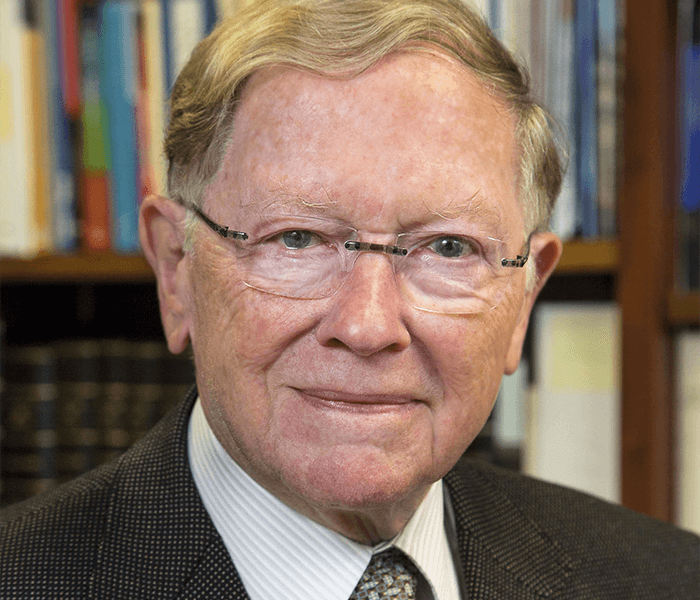
I’ve been fortunate. I was involved at a time when my participation was exciting for me and useful for the organizations. I was particularly fortunate to be involved in the American Academy of Ophthalmology and Otolaryngology when it transitioned to two separate organizations: the American Academy of Ophthalmology (AAO) and the American Academy of Otolaryngology. It was a natural evolution of the professional roles of the physicians involved, but it was also an opportunity to participate actively in the AAO at the level of its fundamental organization; for example, we established a Washington D.C. office to engage with government in the form of advocacy and that has become increasingly important as the years since then have proven.
That’s a critical question. Let me tell you about something that happened in 1967. Jules Stein and the leaders of American ophthalmology at the time – Michael Hogan, Edward Maumenee, David Cogan, Frank Newell and I – all appeared before a congressional committee to recommend the establishment of the National Eye Institute (NEI) as a separate unit within the National Institutes of Health. And we did our best to advocate for it. Right after we finished our testimony, the President of the American Foundation for the Blind spoke on behalf of the people who would be impacted by the NEI – and he spoke in a most convincing emotional and factual manner to promote its formation. That taught me a lesson: we should bring into our role of advocacy the populations of patients who are served and aided by fine eye care, surgery, and the advances of science.
I’m not best placed to try to answer that! I enjoy working with people. I try very hard to listen to ideas, but also I always try to have a basic plan, so that there is a concept of what we should be doing – it can always be altered, changed or abandoned. That philosophy was extremely important in the evolution of the AAO and also in the development of the Jules Stein Eye Institute.
I’m almost smiling and laughing when you bring up the transition from the East Coast to the West Coast! I found that such a difficult decision that I didn’t make it until the day the moving van arrived at our apartment in Bethesda, Maryland. It really was a very difficult decision because there were a number of opportunities in the East Coast at much more well-established institutions. But I was impressed with the opportunity offered at the University of California and my wife and family said: let’s do it! So we came to California knowing very little about the place. It has turned out to be a most fortunate decision – the university has grown enormously and favorably, and Los Angeles is a lovely community in which to reside.
The first time I tried to make contact, he declined to meet me. He said that he’d like to do something nationally, and wasn’t interested in something that might be limited to a particular location. He then founded Research to Prevent Blindness and, as part of his work with that organization, he developed a program to help Johns Hopkins University; they very successfully built a structure for research. I approached him again, asking him if he would consider supporting a program on the West Coast at a University that was not well known, and also part of the state system. He said that he would look at it. I presented him with a rather detailed plan which he found... satisfactory.
It stems from the combination of the initial support of Jules Stein and the community of Los Angeles that allowed us to establish a major base within a university that was growing in stature at the same time. We also had extremely capable researchers, educators and physicians on the faculty. The program has grown substantially since that beginning; our formal dedication was in 1966, so last year we celebrated our fiftieth anniversary with a complete remodeling of our buildings to make sure that we really have a vision campus for the future at UCLA.
We recognized that the science of vision was related to neurology, to pathology, to biochemistry, to physiology... to many other departments. The goal was not initially to create a Department of Ophthalmology per se, but to create an organized research unit that would draw together people from a number of disciplines and several departments of the university. Only after we had built the Jules Stein Eye Institute and only after it was operating very effectively did the small division of ophthalmology become a Department of Ophthalmology.
Extremely important. Curiously, many of the causes of blindness around the world are basically the same. Cataract, glaucoma, amblyopia, strabismus, diabetic retinopathy, and increasingly macular degeneration. These diseases occur in different cultures – but are increasing worldwide. We have an opportunity – and a need – to work in a larger dimension that brings together all of the information that’s available in what we might call “big data” using current terminology. International collaboration is central to achieving that.
